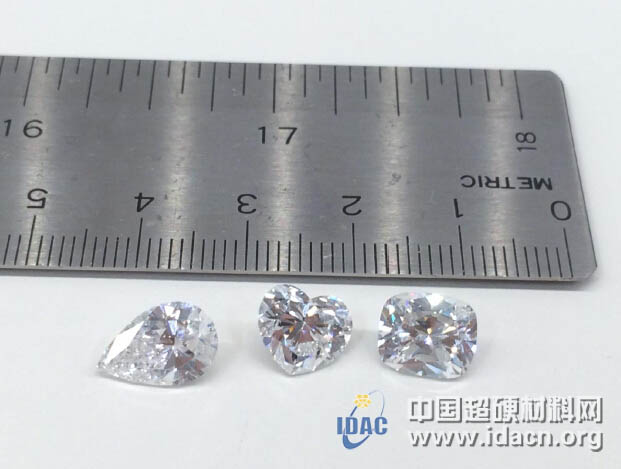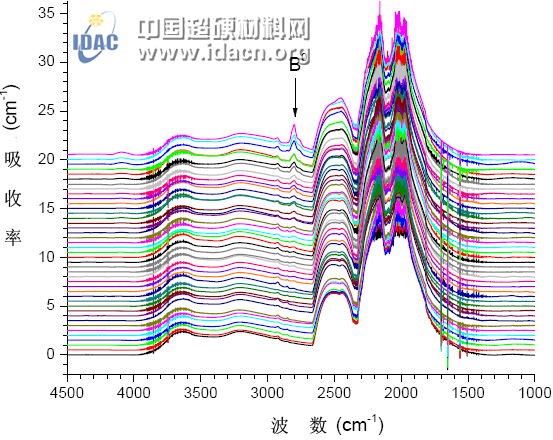Summary Recently, Russian scientists have developed a new type of high temperature high pressure (HPHT) synthetic diamond technology preparation, the reaction can be different layers within the same plurality of unit cells grown HPHT diamond; diamond compared to conventional production method, the novel Technology can grow 2 at a time...
Recently, Russian scientists have developed a new high-temperature and high-pressure (HPHT) synthetic diamond preparation technology that can grow multiple HPHT diamonds in different reaction layers in the same unit cell. Compared with the existing diamond preparation methods, the new technology It can grow 200 samples at a time, greatly improving production efficiency. At the same time, the technology is capable of simultaneously growing nine colorless, coarse, colorless, and nearly colorless diamond crystals, each individually up to 10 carats, which is larger than the synthetic diamonds available on the market. These samples are expected to be polished and polished to gem-quality diamonds. Sample:
Table 1 shows the gem-quality diamonds prepared by the new HPHT method, including the three 2-carat+ samples in Figure 1.
Figure 1: Samples NDT04, NDT02 and NDT01 with weights of 2.02ct, 2.20 ct and 2.30 ct, respectively.

Table 1: Gemological properties of the new HPHT gem grade diamond. 1 carat (ct) = 200 mg (mg).

*38 samples are colorless diamonds, grade D-F, and other samples are nearly colorless, grade G-H.
* Transparency grade: flawless pure transparent (IF) - inclusion (I).
* Currently, conventional HPHT and CVD gem-quality diamonds have not reported larger colorless synthetic diamonds than this technology.
* No correlation has been observed between the weight, color and transparency of the sample.
Microscope observation:
The sample was observed with a Nikon SMZ1500 microscope using projected light, reflected light, and polarized light.
* Diamond inclusions have a metallic appearance, indicating that they are traces of molten metal or catalyst for growing diamond. These inclusions vary in shape: dendrites, thin plates, and dendrites, as shown in Figure 2.
* The birefringence morphology of the sample demonstrates that lower stresses are observed elsewhere except for areas adjacent to the inclusions, as shown in Figure 3.
* If severe inclusions (≥VS2) occur, the sample will be attracted by the magnet, which is consistent with the metal properties in the sample.
Figure 2: Metal/catalyst inclusion micrographs of samples NDT25(a) and NDT26(b).
Figure 3: Birefringence of samples NDT27(a) and NDT25(b).

Fourier transform infrared (FTIR) spectroscopy:
Fourier transform infrared spectroscopy showed that 33 samples were mixed type IIa/IIb diamond, and the other samples were pure diamond type IIa, as shown in Figure 4.
Figure 4: FTIR absorption spectroscopy demonstrates that most of the samples have a neutral replacement boron (B0) in the ~2800 cm-1 band, and the transparency spectrum is vertically converted.

Fluorescence & Phosphorescence:
Standard 4 watt gemstone test light:
*Short wave (254 nm): 39 samples emitted yellow or orange fluorescence with a density ranging from weak to moderate. The other three samples did not fluoresce. All 41 samples have different levels of green, yellow-green, green-yellow, yellow and orange-phosphorescent light for about 6 minutes.
*Long wave (365 nm): 36 samples were inert, and the other samples emitted very weak yellow-orange fluorescence.
Figure 5: Blue fluorescence (ab) and phosphorescence (cd) of sample NDT06.

Phosphorescence spectrum:
The sample was irradiated with a heavy hydrogen-halogen source (215-2500 nm) for 30 minutes.
* All samples emitted blue phosphorescence (~500nm, 2.48eV), and 13 samples had an additional yellow band (~575nm, 2.16eV), as shown in Figure 6.

Figure 6: Phosphorescence spectrum shows that the emission bands of all samples are concentrated at ~500nm (blue); sometimes at ~575nm with a longer band (yellow) spectrum (a) (b) Sample NDT37 and NDT08.
* 500nm phosphorescence is more common for Type IIb natural diamonds and HPHT synthetic diamonds.
* The frequency band is formed by donor-receptor recombination, where boron is the acceptor, the donor is unclear, may be related to nitrogen, or it is a complex from a metal and a catalyst.
Photoluminescence (PL) spectrum:
The impurities in the sample were monitored using a 77 KPL measurement. The spectra were collected using a Raman confocal microspectrometer using five wavelengths of 324.8, 488.0, 514.5, 632.5 and 830.0 nm.
Nickel Peak Figure 7: Sampled Photoluminescence Spectra

* The spectrum of 30 samples shows a double peak at 882.1/883.8 nm, as shown in Figure 7(a).
* 27 samples showed a multiplet at 483.6/483.8/484.1/484.4 nm, as shown in Figure 7(b).
Nitrogen peak:
* Nitrogen vacancies were detected in NV0, 575 nm, 2.156 eV and NV-, 637 nm, 1.945 eV in 25 samples and 10 samples, respectively. As shown in Figure 7 (c). These nitrogen vacancies are observed in both natural diamond and synthetic diamond.
Silicon peak:
SiV- was detected in 16 samples, and silicon vacancies were found in 736.6/736.9 nm and 1.6832/1.6825 eV, as shown in Fig. 7(d). Such silicon vacancies are common in CVD synthetic diamonds and are rare in natural diamonds and HPHT synthetic diamonds.
in conclusion:
• The new high temperature and high pressure (HPHT) synthetic diamond preparation technology has produced the largest colorless synthetic diamond, weighing 2.30 ct.
• Although the sample transparency is high, it still contains the contents of the molten metal and the catalyst.
• The sample does not show the type of birefringence.
• The sample is of high purity type IIa or low purity type IIb.
• Photoluminescence shows the presence of point defects in the sample, including nitrogen impurities.
China SIDE HOOD ,Stainless Steel Side Hood,Side Range Hood Manufacturer
This is also the stainless steel materials with wall mounted fixing ,since this materials is very easy to clear and hand it well.
the size is 900*500*555mm
Side Hood ,Stainless Steel Side Hood,Side Range Hood,Stainless Steel Side Range Hood
China leading manufacturers and suppliers of Side Hood,Stainless Steel Side Hood, and we are specialize in Side Range Hood,Stainless Steel Side Range Hood, etc.
SIDE HOOD
Side Hood,Stainless Steel Side Hood,Side Range Hood,Stainless Steel Side Range Hood
GUANGZHOU AIJINGSI TRADING LIMITED , https://www.aichugashob.com
